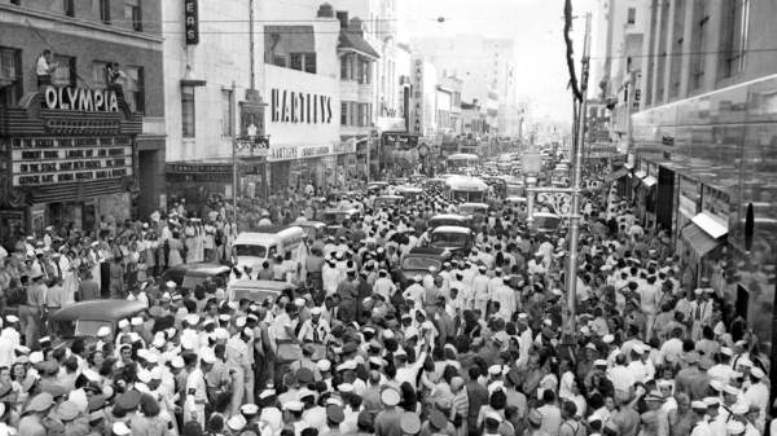The first half of the 1940s was defined by World War II. Miami and all of South Florida was taken over by the military. Given its ideal climate and topography, Florida was a perfect place for the military to train before dispatching soldiers to the theaters of war.
The Army took over the airport, the Navy took over downtown and the Army Air Force took over Miami Beach. Many of the office buildings, hotels and apartments were occupied by the different branches of the military. Hotels and restaurants became mess halls.
Length of Video: 14 minutes and 25 seconds
During the war, all areas of South Florida supported the effort in one way or another. The current location of Zoo Miami was the Richmond Naval Air Base. It was the home of three large reconnaissance blimps that were responsible for finding German submarines along the coast of Florida.
When the world learned of Franklin Roosevelt’s death, the country was in mourning. Miami residents recalled his near brush with death at Bayfront Park in 1933. Most Americans thought of FDR as family. His fireside chats created a familiarity and a close bond with those looking for comfort during tough economic times and then through the war.
As word spread of the victory in Europe, Miami residents and military personnel knew there was still another war to be won. On August 15, 1945, the area erupted in celebration. Victory in Japan sent a mass of Navy personnel and residents into downtown Miami to celebrate. The images of celebration were prevalent everywhere, but particularly on Flagler Street in front of the Olympia Theater.
At the conclusion of the war, soldiers stationed in Miami recalled how much they enjoyed the South Florida area. It was said that they got sand in their shoes. The return of the soldiers to the area created a tremendous growth spurt. The building boom that followed rivaled the boom of the mid-1920s.
The growth and G.I. Bill led to the rapid development of the University of Miami. The school was now able to build on their original campus and expand to become the thriving private university it is today. The decade of the 1940s began with tremendous uncertainty and ended with growth and optimism.

